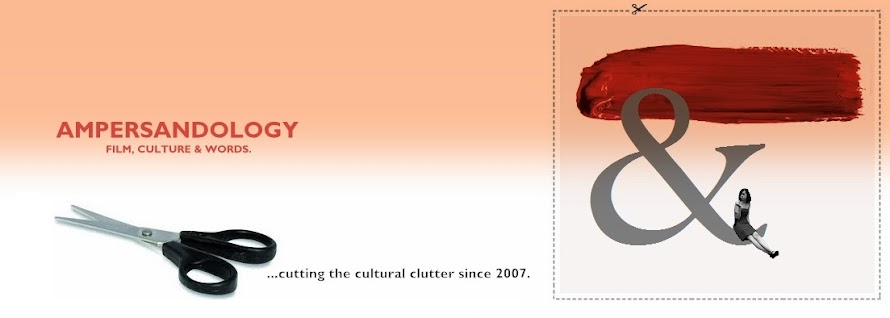by Jillian Butler, Ampersandology
In traditional Gothic fiction, women are tossed the worst duties of the genre, and most often, they are relegated to one of two roles, the Angel or the Monster (see Gilbert & Gubar's groundbreaking, if somewhat dated, feminist critique of this trope, The Madwoman in the Attic). In the films that skew towards the Gothic, the ladyfolk tend to become bigger emblems than their vintage counterparts. But it's still a mouthful of questions towards sexuality, power dynamics and family structure. Again. Some more.
So...yay?
Then, the Gothic can turn the family home into a prison--maybe the best example of this is the two aging sisters in Whatever Happened to Baby Jane? One of the sisters (Baby Jane, a terrifying Bette Davis) was a child star on the vaudeville circuit, who grew up into a nobody desperate to break back into the business. Her sister Blanche (Joan Crawford) has lost out on her far more promising career in film, thanks to a car accident that leaves her in a wheelchair and completely dependent on Baby Jane.
 |
| La Belle Dame Sans Merci, London Charivari 1920 |
So...yay?
The 90s had more than just Coppola's demented post-jungle fragments. Off the top of my head, I still can't forget the death sequence of Selina Kyle in Batman Returns (see that scene here) and her subsequent rebirth as Catwoman. Here is the next-gen madwoman in the attic, a common Gothic standby, twisted into a hybrid of the modern feminist movement. See her glee as she destroys the girlish fragments of her old life--a stuffed toy, a doll house, soft pink kitten sweaters. Even the presence of these objects in the first place is absurdly Gothic--what grown woman owns more than one stuffed unicorn?
Catwoman is a dark reaction to the patriarchy that literally killed her identity, but also to the sisterhood that let her down. Empowerment? Equality? Where's all the spoils of the promised revolution? Selina Kyle was still fetching her boss's coffee, timid and subservient. Catwoman, however, doesn't really buy into the boys' club, even sewing her own skintight black leather death shroud--a cheeky, definitely Gothic corruption of the "women's work" of needlework and darning.
Damn it, the Pfeiffer is so fabulous in this role.
Damn it, the Pfeiffer is so fabulous in this role.
At its finest, Gothic film can point to the insecurities that lay underneath a society. Take the rash of films that appeared in the mid-70s featuring a store of demonic children and ambivalent mother figures, in part a reaction to the ripple effects of Second Wave feminism and women's struggle to find meaning outside of the traditional realm of the homestead. Motherhood ain't all it's cracked up to be, the Gothic reminds us, and paints an unrelenting picture of how perverse the woman's role in the family can be.
The Gothic loves to tackle the task of motherhood in particular. Look no farther than 1973's The Exorcist, where the Gothic takes a (quite literally) demented stance on the dissolution of the nuclear family. Chris (Ellen Burstyn) is a single mother to Reagan (Linda Blair)--she's newly divorced, and the old husband has absconded to Europe and can't manage to call his daughter on her birthday. Then a demon possessed her child. It's not hard to read this as society's condemnation of her lifestyle--in addition to be a fairly secure and independent single mother, she is also an ACTRESS who throws BOHEMIAN parties, heaven forfend.
The rest of the familiar Gothic tropes are in full force as well--cursed artifacts, howling winds and mysterious ruins, and a Byronic hero in its heroic priest (conflicted, brooding and dreamy) for good measure.
The so-called authorities--doctors, therapists and police officers--impose themselves into her parenting, at first suggesting Reagan's increasingly strange behavior may be result of depression0--get this--caused by her husband's absence. In other words, way to keep you family together, lady. Your crazy kid is nobody's fault but your own.
The so-called authorities--doctors, therapists and police officers--impose themselves into her parenting, at first suggesting Reagan's increasingly strange behavior may be result of depression0--get this--caused by her husband's absence. In other words, way to keep you family together, lady. Your crazy kid is nobody's fault but your own.
Chris may seem completely impotent to help her child, but in the end, it's her powerful maternal instincts that saves Reagan, first by refusing to institutionalize her little girl, then to seek help from the reluctant church.
Sublime Secrets of the Pathological Sisterhood
 |
| The sisterly bond in Whatever Happened to Baby Jane? |
The film details the terrorizing of Blanche by Baby Jane, and what results is a demented tale of the feminine fear of aging, the corruptive potential of the sororal bond, and how their decrepit ancestral home becomes an almost demonic weapon in their rivalry as they remained inevitably tied to its fate and trapped within its walls--even the household pets become tools in domestic warfare. Each can't escape their sister--their dark Other--and their fates remain entwined to the bitter end. Rah rah sisterhood, and all that.
Have a suggestion for a future Ampersandology topic? Got something
you’d like to say? All feedback welcome! Shoot us an email at ampersandology@gmail.com, or follow Ampersandology on Facebook.



No comments:
Post a Comment